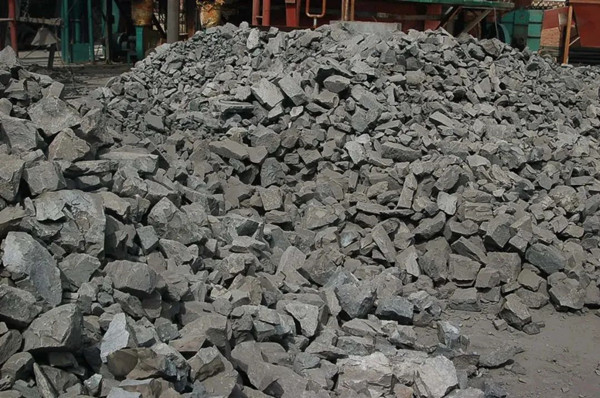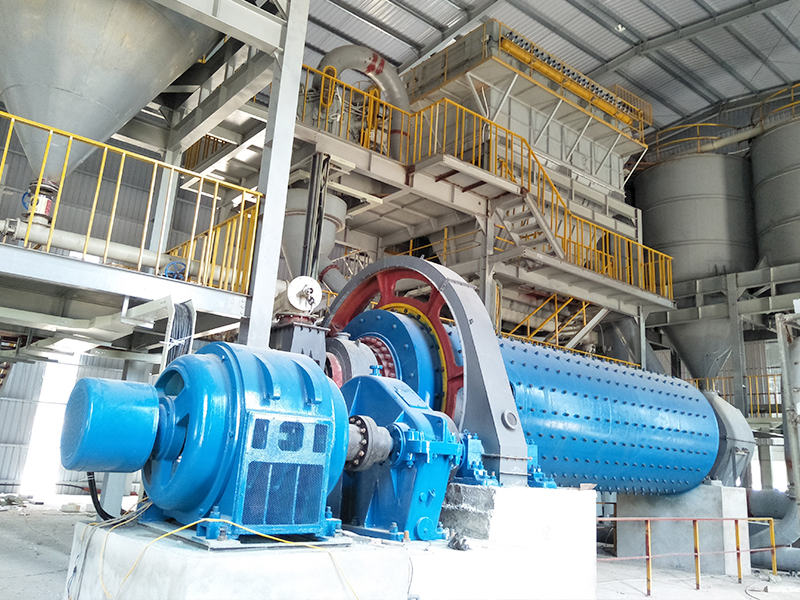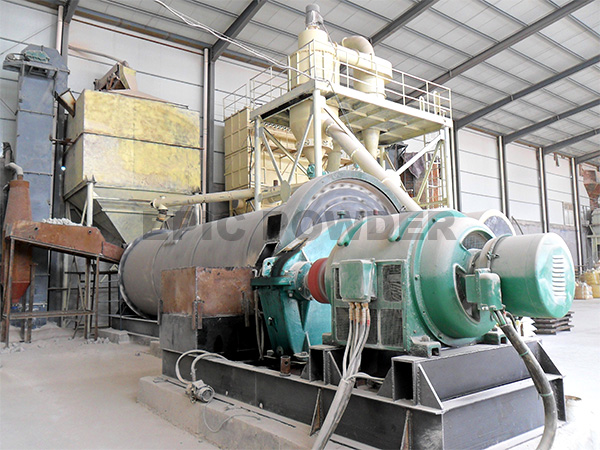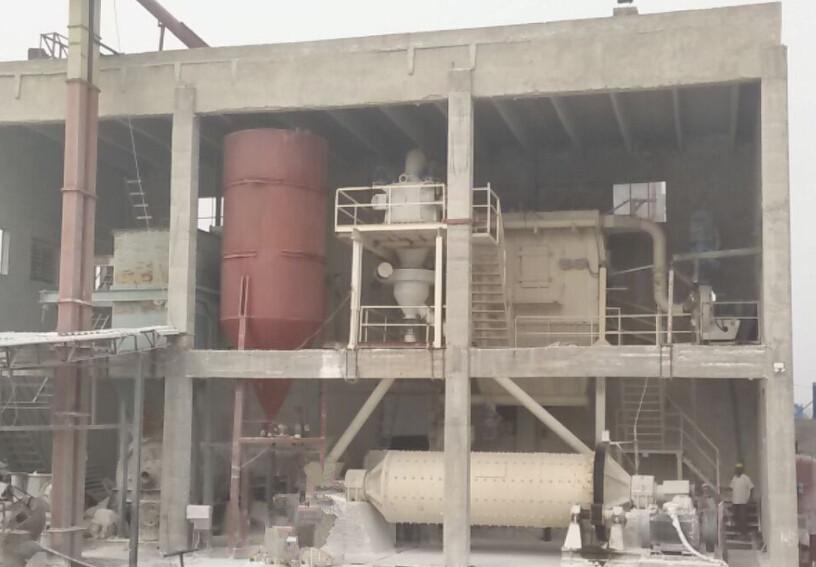NO. 369, Road S209, Huanxiu, Qingdao City, China
Coal series kaolin

The application status of coal based kaolin in various industrial fields
Coal based kaolin is widely used in various industrial fields due to its simple mineral composition, pure chemical composition, high temperature resistance, good dispersibility, stable chemical properties, and excellent electrical insulation properties. The development and application of coal based hard kaolin are mainly introduced in the following industrial fields:Chemical industry
(1) In the production of aluminum compounds, the content of Al2O3 in coal based kaolin is generally high, mostly between 35% and 39%. After further chemical industrial processing, various high value-added aluminum salt products such as alumina and nanoscale can be produced α- Aluminum oxide.
① AlCl3- serves as a hardening agent in the field of precision casting; Used as a hydrocracking agent in the petroleum industry; Serve as a sizing and settling agent in the papermaking industry; In addition, it is also used as a wood preservative, sewage separator, etc.
② Aluminum sulfate is mainly used as filler in paper industry, and is also used in wood preservation, foam fire extinguishing, flocculant, mordant, medical astringent and other fields.
③ Al (OH) 3- used as a smokeless flame retardant filler in polyvinyl chloride plastics and polymers; Used as a catalyst and flame retardant filler for synthesizing rubber products; Used as a whitening and brightening agent for papermaking and as a filler for artificial carpets.
④ Nanoscale α- The Al2O3 electronic industry produces integrated circuit substrates, transparent ceramic lamps, magnetic tapes, and fluorescent powders as raw materials for high-performance structural ceramics and laser materials.
(2) Production of silicone, water glass, and white carbon black
During the chemical production of aluminum salts from coal based kaolin, a large amount of reaction residues are generated, mainly composed of SiO2, which can be used as raw materials for the production of sodium silicate and white carbon black. Dissolve the acid leaching residue through caustic soda, filter and remove the residue. Then, add an electrolyte to the sodium silicate solution, undergo acidification treatment, and precipitate the hydrated SiO2. After treatment, the product is filtered, washed, and dried to obtain white carbon black.
(3) Synthetic zeolite
In recent years, scholars have conducted in-depth exploration on the application of coal based calcined soil to prepare zeolite. High quality coal based kaolin has a similar Al2O3/SiO2 molecular ratio to 4A molecular sieve, making it suitable for the production of zeolites. The hydrothermal crystallization method can generate different types of zeolites such as A, X, Y, etc. Among them, 4A zeolite is used as a detergent additive and can replace sodium tripolyphosphate in the production of phosphorus free laundry detergent and detergent, thereby reducing environmental pollution.
Application in the field of building materials
(1) Geopolymeric cement
As a new type of cementitious material, geopolymeric cement is mainly composed of amorphous minerals, and its mineral composition is significantly different from that of Portland cement. The main valence bonds of geopolymeric cement are ionic bonds and covalent bonds, with van der Waals bonds playing a supporting role, while traditional cement uses van der Waals bonds and hydrogen bonds as the main valence bonds, resulting in superior performance compared to traditional Portland cement.
(2) Concrete admixtures
After calcination at high temperatures, the calcined product of kaolin (mainly metakaolin) exhibits irregular internal atomic arrangement, which is thermodynamically in a metastable state and prone to chemical hydration reactions with water. Hydrated products include CSH gel, hydrated calcium aluminate, hydrated sulfur calcium aluminate, etc., which can replace silica fume and generally fill in concrete admixtures.
(3) Paint and coating
At present, paint coatings are the main application area for calcined kaolin in China, and kaolin is mainly used as filler and colorant substitute in paint coatings. For paint coatings, calcined coal-based kaolin has obvious advantages. In addition to the chemical inertness, high coverage, ideal suspension fluidity, low cost, white color, and reduced need for expensive dyes of ordinary kaolin, it also has excellent optical properties, irregular shape, high oil absorption rate, high pigment volume concentration, resistance to aging, wear resistance, and ease of emulsification in water or oil media.
Application in rubber and plastics industry
The surface modified calcined coal-derived kaolin has a similar polarity to the surface of the rubber material, and is easily wetted by the rubber material, resulting in faster powder uptake efficiency, which can better enhance the dispersion effect of the rubber material and achieve better reinforcement of the rubber particles.
(1) Application in rubber
After modification, conventional calcined kaolin can be added to rubber to achieve a semi-reinforcing effect. In addition, it can promote colloidal crosslinking and dispersion, improve vulcanization efficiency, enhance processing performance, and increase filling volume and economic benefits.
(2) Application in plastics
Calcined kaolin is used as a filler in engineering and general plastics, with a typical filling amount of 20 % to 40 %. The use of calcined kaolin from coal measures in plastics can effectively improve and enhance performance parameters such as glass transition temperature, tensile strength, and modulus. In addition, calcined kaolin from coal measures can effectively block far infrared rays, and is often used as an additive in agricultural plastic greenhouse films to maintain a relatively appropriate temperature throughout the day and night, enhance the non-fog effect of agricultural films, and improve the uniformity of light. It is an ideal additive for agricultural film insulation.
Paper filler
Calcined kaolin is mainly used as a filler in the paper industry. After surface modification and coating with titanium dioxide, coal-derived calcined kaolin has similar functions to titanium dioxide. Due to its higher coloring power and hiding power, it is particularly suitable for use in high-speed blade coaters.
Industrial porcelain
(1) Ceramics
Ceramics for high-temperature structural applications have developed rapidly in recent years, replacing traditional metal materials in the field of high-temperature engineering materials. This type of ceramic material has better chemical resistance, thermal and seismic resistance, and high-temperature stability. Using flowing argon gas for atmosphere control, SiCw / Al2O3 ceramic powders were synthesized at high temperatures using natural kaolin and nanoscale carbon black as raw materials. The resulting SiC whiskers had diameters below 200 nm and lengths exceeding 5 um. The ceramic powder produced by this method has significantly improved properties such as fracture toughness, thermal shock resistance, and bending strength.
(2) Electric porcelain
In the research on the development and utilization of kaolin raw materials in the western region of Heilongjiang Province,"based on ceramic raw materials from industrial sites, supplemented by raw materials from the province and other regions, high-voltage and low-voltage electrical porcelain that meet China's national industrial standards were produced."
(3) Enamel
As a composite material, the main principle of enamel is to fuse and coagulate inorganic glassy materials onto a metal framework to form a strong bond. Kaolin is used in enamel as an inorganic glassy material to fill it. Enamel products are safe and non-toxic, easy to clean, and widely used in daily life as eating utensils and washing utensils. Enamel has a rich variety of varieties, and according to different purposes, its industrial fields mainly include different enamel categories such as art, daily use, hygiene, construction, industry, and special.
Polymer materials
(1) Insulating electronic materials
The modified calcined kaolin from coal measures can effectively improve its insulation resistance and is environmentally friendly, which has led to extensive research into its use as a substitute for organic flame retardants that were harmful to the environment in the past. Nowadays, modified calcined kaolin from coal-based materials has been applied to phenolic resin-based flame retardant copper clad laminates and their laminated insulation boards.
(2) raw materials for glass fiber products
Glass fiber, as a type of inorganic non-metallic material, is a major member of today's material system and has excellent performance. Based on the chemical composition and mineral characteristics of kaolin, ultra-fine kaolin was explored for the production of alkali-free tank furnace glass fibers and chlorinated butyl rubber. The exploration results show that this type of coal-series kaolin has broad prospects for development in the fields of glass fiber and rubber.




Leave a Comment